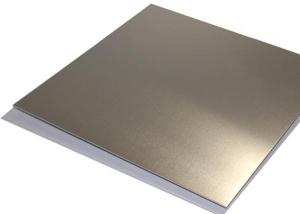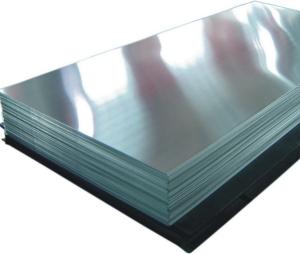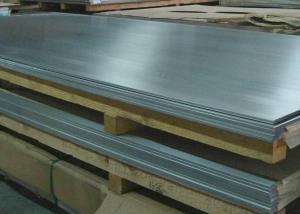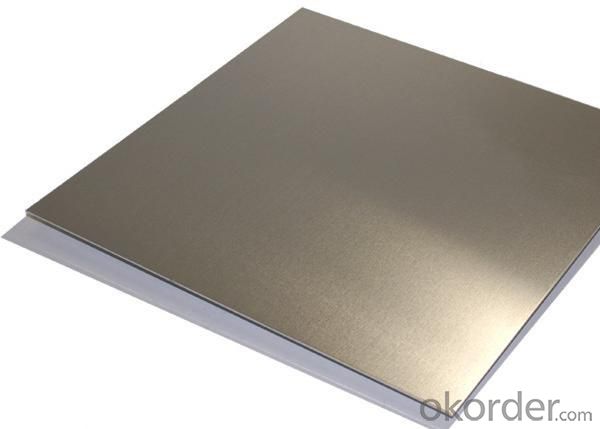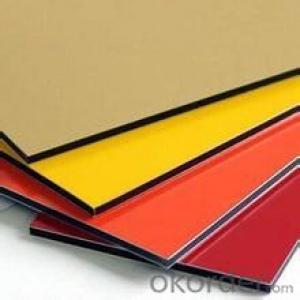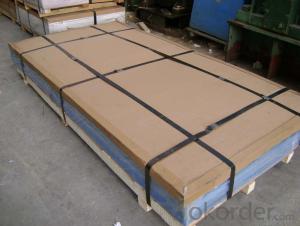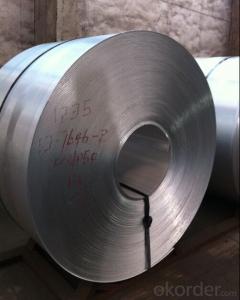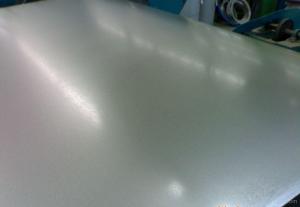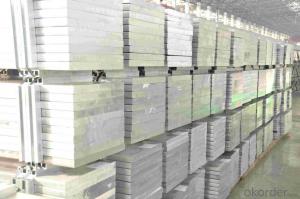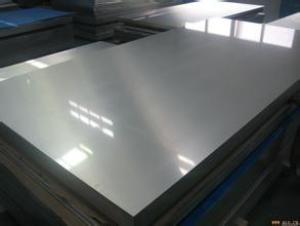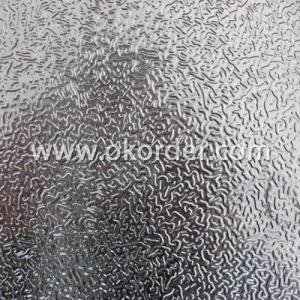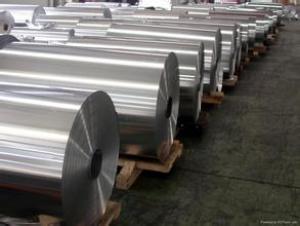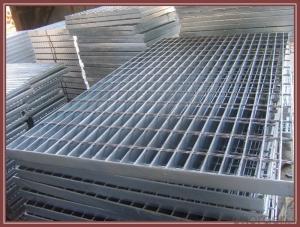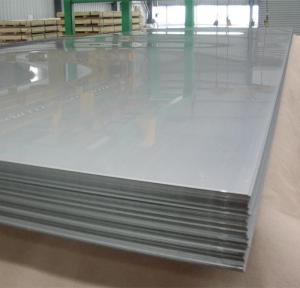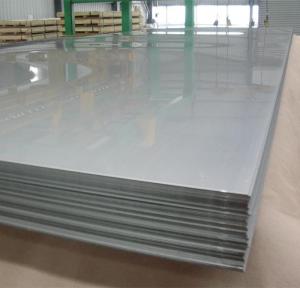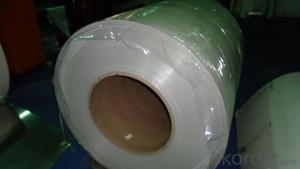Aluminum Laminate Sheets - Aluminum Plates
- Loading Port:
- China Main Port
- Payment Terms:
- TT or LC
- Min Order Qty:
- 5 Tons m.t.
- Supply Capability:
- 10000 Tons Per Month m.t./month
OKorder Service Pledge
OKorder Financial Service
You Might Also Like
1 Specifications of Aluminum Plates
|
Alloy Number |
AA1050 , AA1060 ,AA1070 ,AA1100 etc. |
|
Temper |
H12, H14, H16, H18, H22, H24, H26, H32, HO, F |
|
Thickness |
0.1mm – 500mm |
|
Width |
10mm- 2200mm |
|
Standard |
GB/T3880-2006, ASTM, ISO, EU standard |
Special Specification is available on customer’s requirement
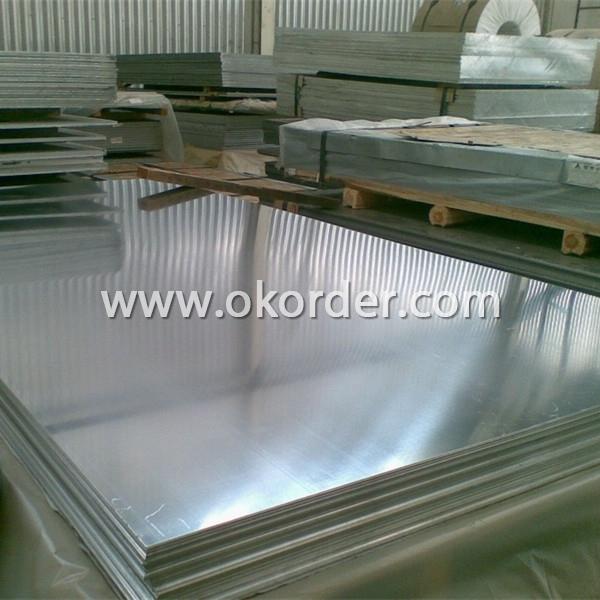
2 Usage/Applications of Aluminum Plates
Aluminum Plates is between 0.1 mm and 500mm in thickness and has a wide variety of uses in the construction industry including aluminium siding and roofing. Sheet is also used widely in construction, decoration, transport applications and other various industrial filed, such as automobile body panels, airframes, curtain walls and the hulls of boats etc.
CNBM produces aluminum plates which meets the highest standards in its own mill while save the cost. Our strong quality control term bring you the most-qualified products. And with state-of-the-art equipment, and the state owned company background, we have to say, you will understand why there are so many company choose CNBM to be their supplier. CNBM aluminum complying with YS/T 429-2000(Chinese Industry Standard),GB/T 3880,EN485,ASTM B209.
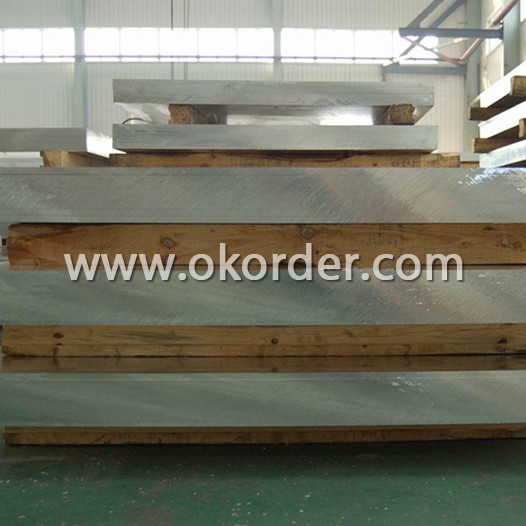
3 Packaging & Delivery of Aluminum Plates
Packaging:Seaworthy package, bubble plastic bag inside, anti-moisture paper wrapped outside, covered with cartons, on wooden pallets, in containers. Pallet weight: Max. 2.30 tons.
Shipment:the goods will be delivered in 40 days after getting the buyer's payment.
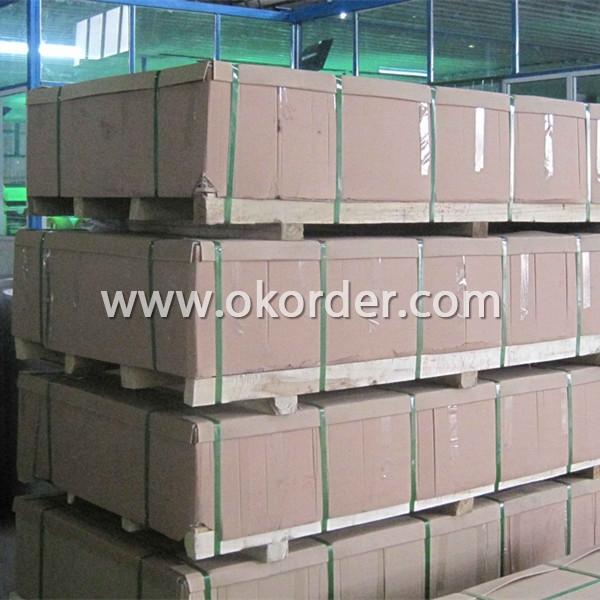
4 Production Flow of Aluminum Plates
Rolling--Annealing--Slitting--Sawing, Cut-To-Length, Shearing
- Q: Can 101 aluminum sheets be bent or formed into different shapes?
- Yes, 101 aluminum sheets can be bent or formed into different shapes.
- Q: Are 101 aluminum sheets resistant to corrosion?
- Indeed, 101 aluminum sheets display remarkable resistance to corrosion. This is attributed to aluminum's inherent ability to form an oxide layer on its surface upon exposure to oxygen, which serves as a formidable shield against corrosion and safeguards the metal from deterioration. Furthermore, the 101 aluminum alloy is meticulously engineered with superior properties that bolster its resistance to corrosion, surpassing other aluminum alloys in this regard. Consequently, when confronted with the need for corrosion resistance, 101 aluminum sheets stand as a dependable option.
- Q: What is the thermal conductivity of aluminum sheets?
- Aluminum sheets exhibit high thermal conductivity, reaching around 237 W/m·K. This quality endows aluminum with exceptional heat conduction capabilities, enabling efficient heat transfer between different regions. Consequently, aluminum sheets find widespread application in various domains, including heat sinks, radiators, and cooking pans.
- Q: What are the dimensions of standard aluminum sheets?
- Standard aluminum sheets typically have dimensions of 4 feet by 8 feet. However, it's important to note that aluminum sheets come in various thicknesses, ranging from thin gauge sheets to thicker plates. The thickness of standard aluminum sheets can vary from 0.025 inches to 0.25 inches or more. Additionally, aluminum sheets can be cut and customized to different sizes and shapes based on specific project requirements.
- Q: What are the different methods of forming aluminum sheet?
- Aluminum sheet can be formed using various methods, each with its own advantages and limitations. 1) Rolling is the most commonly used method for manufacturing aluminum sheet. It involves passing aluminum ingots through rolling mills, gradually reducing the thickness until the desired sheet thickness is achieved. Rolling is highly versatile, allowing for precise thicknesses and a wide range of sizes. 2) Extrusion involves forcing a heated aluminum billet through a die to create a continuous sheet. This method is often used to produce sheets with complex cross-sectional shapes and consistent thickness. It is ideal for creating aluminum sheets with consistent patterns or textures. 3) Casting entails pouring molten aluminum into a mold and allowing it to solidify. It is commonly used for producing large aluminum sheets with irregular shapes or intricate designs. However, the thickness of cast aluminum sheets may not be as consistent as those created through rolling or extrusion. 4) Stretch forming involves clamping a sheet of aluminum around its edges and stretching it over a die to achieve the desired shape. This method is commonly used for producing curved or contoured aluminum sheets, such as those used in automotive or aerospace applications. 5) Spinning utilizes a rotating disk or mandrel pressed against a sheet of aluminum to shape it into the desired form. This method is frequently employed to create cylindrical or conical aluminum sheets, like those seen in lighting fixtures or cookware. 6) Deep drawing involves placing a flat sheet of aluminum into a die and using a punch to force the metal into the desired shape. It is commonly used for producing aluminum sheets with deep, cup-like shapes, such as those found in beverage cans or automotive parts. Ultimately, the choice of method for forming aluminum sheet depends on factors such as the desired shape, thickness, and complexity of the final product, as well as production volume and cost considerations.
- Q: What are the different bending methods for aluminum sheets?
- There are several different bending methods for aluminum sheets, each with its own advantages and limitations. Some of the commonly used bending methods for aluminum sheets include: 1. Air Bending: This method involves using a punch and die to create a bend in the aluminum sheet without directly touching it. Compressed air is used to apply force on the sheet, resulting in the desired bend. Air bending is a versatile method that allows for a variety of bend angles and radii. 2. Bottom Bending: In this method, the aluminum sheet is clamped between a V-shaped die and a flat die. A punch is then used to press the sheet into the V-shaped die, creating the desired bend. Bottom bending is suitable for creating sharp bends with small radii. 3. Coining: Coined bends are created by applying high pressure to the aluminum sheet between a punch and a die. This method produces precise, crisp bends with minimal springback. However, it requires specialized equipment and is typically used for high-volume production. 4. Roll Bending: Roll bending involves passing the aluminum sheet between a set of rollers to gradually bend it into the desired shape. This method is commonly used for creating cylindrical or conical shapes. Roll bending can achieve large radii and is suitable for thicker aluminum sheets. 5. Press Brake Bending: Press brake bending is a common method that uses a hydraulic or mechanical press brake to create bends in aluminum sheets. The sheet is clamped between a punch and a die, and the press brake applies force to create the bend. Press brake bending offers flexibility in terms of bend angles and radii. It is important to note that the choice of bending method depends on various factors such as the desired bend angle, radius, material thickness, and the specific requirements of the application.
- Q: I have a friend to purchase a number of aluminum, used to make computer cooling plate. He asked me to help with the supplier, can I look at the Internet, there are many kinds of aluminum, would like to ask: what kind of computer cooling plate used to do a bit better? What are the suitable suppliers in Guangdong?
- Computer cooling aluminum plate, mainly using 6063 T5 high quality aluminum and high quality copper, they are mainly used to make aluminum extrusion fin. 6063 T5 high-quality aluminum material can reach more than 98%, and its heat conduction ability, small density, cheap price, so get the love of major manufacturers.At present, the common aluminum extrusion fins are made of copper and aluminum alloy, and each of the two has its own advantages and disadvantages.
- Q: What are the different methods of surface preparation for aluminum sheets?
- There are several methods of surface preparation that can be used for aluminum sheets. These methods are designed to clean, treat, and prepare the surface of the aluminum to ensure optimal adhesion and paint durability. Here are some of the different methods of surface preparation for aluminum sheets: 1. Mechanical Abrasion: This method involves using abrasive materials such as sandpaper, wire brushes, or sandblasting to physically remove any dirt, rust, or oxidation from the surface of the aluminum. Mechanical abrasion creates a rough texture on the surface, which promotes paint adhesion. 2. Chemical Cleaning: Chemical cleaning involves using acidic or alkaline solutions to remove any contaminants or oxidation from the surface of the aluminum. This method is particularly effective for removing tough stains, oils, or greases. The surface is typically rinsed thoroughly after chemical cleaning to remove any residue. 3. Etching: Etching is a process that involves applying an acidic or alkaline solution to the aluminum surface to create a microscopically rough texture. This rough surface enhances paint adhesion and provides a better bonding surface for coatings. Etching is commonly used as a pre-treatment before applying a primer or paint. 4. Conversion Coating: Conversion coating is a surface treatment method that involves applying a chemical solution to the aluminum surface to create a thin, protective layer. This layer not only improves paint adhesion but also provides corrosion resistance. Common conversion coatings for aluminum include chromate conversion coatings and phosphoric acid anodizing. 5. Mechanical Cleaning: Mechanical cleaning involves using mechanical methods such as brushing, scraping, or buffing to remove loose particles, dirt, or debris from the surface of the aluminum. This method is often used as a preliminary step before applying other surface treatments or coatings. It is important to note that the choice of surface preparation method may vary depending on the specific requirements of the aluminum sheet's application, the condition of the surface, and the desired finish. Proper surface preparation is crucial to ensure the longevity and performance of the paint or coating applied to aluminum sheets.
- Q: who knows the ceiling technology of aluminum sheet?
- Different materials usually have difference in construction technology. The detailed ceiling construction technology process of aluminum buckle plate:1, snapping line: according to the elevation horizontal line of floor, designed elevation, surrounding ceiling elevation horizontal line, you can find the central point of your room. Then alone the ceiling’s elevation horizontal line, take the central point of your room as focus, you can draw the grading line of keel. 2, install main keel boom: after ensuring the ceiling’s elevation horizontal line and keel’s location line, you can measure the elevation of the below ending of boom, and install the boom processed before. You can use expansion bolt to fix the boom on ceiling. Choose round steel as boom, control the gap of hanging bar under the range of 1200mm.3, install main keel: choose C38 light steel keel as main keel, control the gap under 1200mm. connect it with fitting and boom matched with main keel while installing. 4, install side keel: fix 25×25mm coated keel on the surrounding wall with cement nail according to net height of ceiling, control the cement nail’s gap under 300mm. 5, install sub keel: install the sub keel matched with aluminum buckle plate according to the size of aluminum buckle plate, hang the sub keel on main keel through hanger. When the sub keel needs to be prolonged by several keel, use the adapting piece of sub keel, connect the two ends and fix them after straightening at the same time of hanging the sub keel.
- Q: Is it possible to install aluminum sheets on an existing roof structure?
- <p>Yes, aluminum sheets can be installed on existing roofs. This process typically involves removing the old roofing material and ensuring the roof structure is sound. Aluminum sheets are lightweight, durable, and resistant to corrosion, making them a popular choice for roof installations. They can be installed over a solid substrate, such as plywood or metal decking, and often require a proper underlayment to ensure watertightness. It's important to follow manufacturer guidelines and local building codes when installing aluminum sheets on an existing roof. Professional installation is recommended to ensure the roof's integrity and longevity.</p>
1. Manufacturer Overview
| Location | Henan,China |
| Year Established | 2002 |
| Annual Output Value | Above US$200 Million |
| Main Markets | Mid East;Eastern Europe;North America |
| Company Certifications | ISO 9001:2000;ISO 14001:2004;OHSAS 18001 |
2. Manufacturer Certificates
| a) Certification Name | |
| Range | |
| Reference | |
| Validity Period |
3. Manufacturer Capability
| a) Trade Capacity | |
| Nearest Port | Shanghai |
| Export Percentage | 30%-50% |
| No.of Employees in Trade Department | 21-50 People |
| Language Spoken: | English;Chinese |
| b) Factory Information | |
| Factory Size: | Above 100,000 square meters |
| No. of Production Lines | Above 10 |
| Contract Manufacturing | OEM Service Offered;Design Service Offered |
| Product Price Range | Average |
Send your message to us
Aluminum Laminate Sheets - Aluminum Plates
- Loading Port:
- China Main Port
- Payment Terms:
- TT or LC
- Min Order Qty:
- 5 Tons m.t.
- Supply Capability:
- 10000 Tons Per Month m.t./month
OKorder Service Pledge
OKorder Financial Service
Similar products
Hot products
Hot Searches
Related keywords
